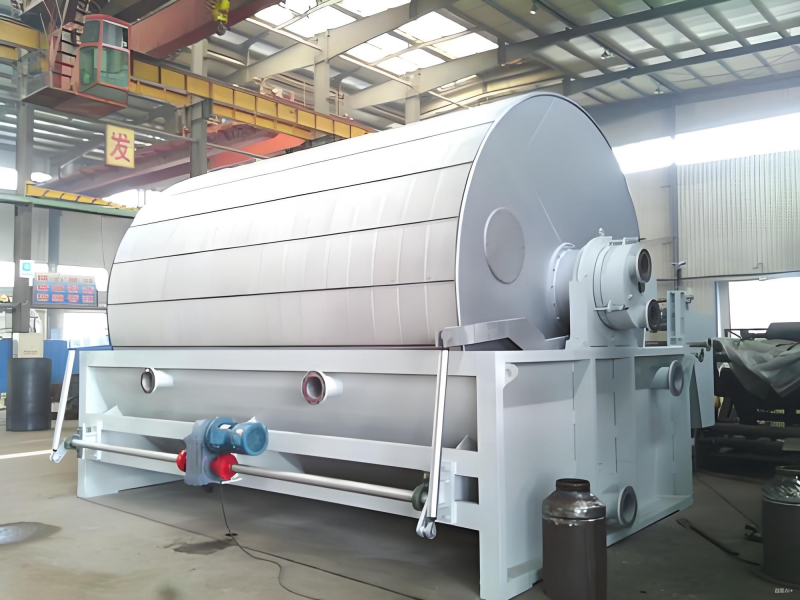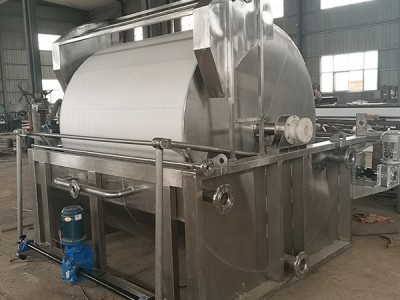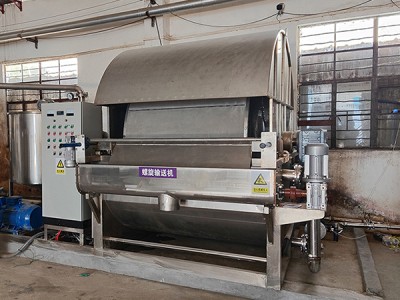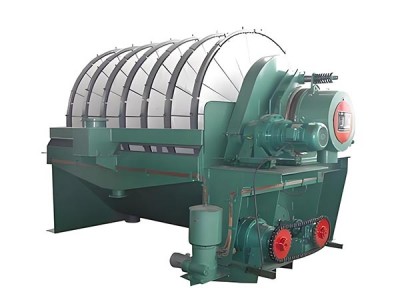The Tailings Treatment Filter is specialized equipment for solid-liquid separation of mining tailings. It is primarily designed to separate solid particles from water in tailings slurry, achieving dry discharge of tailings residues and recovery of water resources.
Core Functions and Features
The core principle is to trap tailings particles via filter cloth combined with vacuum suction, simultaneously completing filtration, slag discharge, and filter cloth regeneration to achieve continuous solid-liquid separation.
The treated tailings residue is in the form of filter cakes with low moisture content. The filter cake thickness can be controlled by adjusting the drum rotation speed, facilitating stacking, transportation, or secondary utilization.
The recovered clean water boasts high purity and can be directly recycled for mining production, reducing water resource consumption and meeting the requirements of green mine construction.
The Importance of Tailings Treatment
Tailings treatment is an indispensable part of mining production, and it is directly related to ecological protection, production safety, and resource recycling.
Prevent the leakage of heavy metals and harmful substances from tailings, avoid soil and groundwater contamination, reduce dust emissions and water silting, and protect the ecological environment.
Reduce the risk of geological hazards such as tailings dam failure and landslides, ensure the safety of life and property of residents living around the mine, and maintain production order.
Recover valuable minerals, water resources, and energy from tailings to achieve resource recycling, improve the economic benefits of mines, and align with the concept of green development.
How Does the Tailings Treatment Filter Work?
The tailings slurry is evenly distributed on the surface of the drum’s filter cloth via the feeding device. As the drum rotates, the vacuum chamber inside it generates suction, trapping solid tailings particles and forming a filter cake.
As the drum continues to rotate, the filter cake is further dehydrated under vacuum suction, reducing its moisture content. Meanwhile, the separated clean water passes through the filter cloth and enters the vacuum system for subsequent recycling and reuse.
The dehydrated filter cake rotates with the drum to the slag discharge zone, where it is stripped from the filter cloth by a scraper or rope, completing the collection of tailings residues. Subsequently, the filter cloth is regenerated by the cleaning device and enters the next filtration cycle.
Core Selection Criteria for Tailings Treatment Filters
Match the key characteristics of tailings, with a focus on particle size, viscosity, and solid content, to ensure the filter cloth does not clog and the filter cake forms uniformly.
Align with actual treatment capacity and dehydration requirements. Combine parameters such as drum diameter, rotation speed, and vacuum degree to balance treatment efficiency and filter cake moisture content.
Consider operating costs and environmental compatibility. Prioritize models with low energy consumption, long filter cloth service life, and easy maintenance to meet the environmental compliance requirements of mines.
Application Scenarios
Compatible Tailings Types:Tailings slurry from industries such as metal mines, non-metallic mines, and coal mines.
Core Application Scenarios:Solid-liquid separation processes including tailings dry discharge treatment, mine wastewater reuse, and tailings residue resource recovery.
Limitations:
Tailings with high viscosity/high sludge content require pre-treatment.
Low-temperature environments require supporting thermal insulation devices.
Hot Tags:








